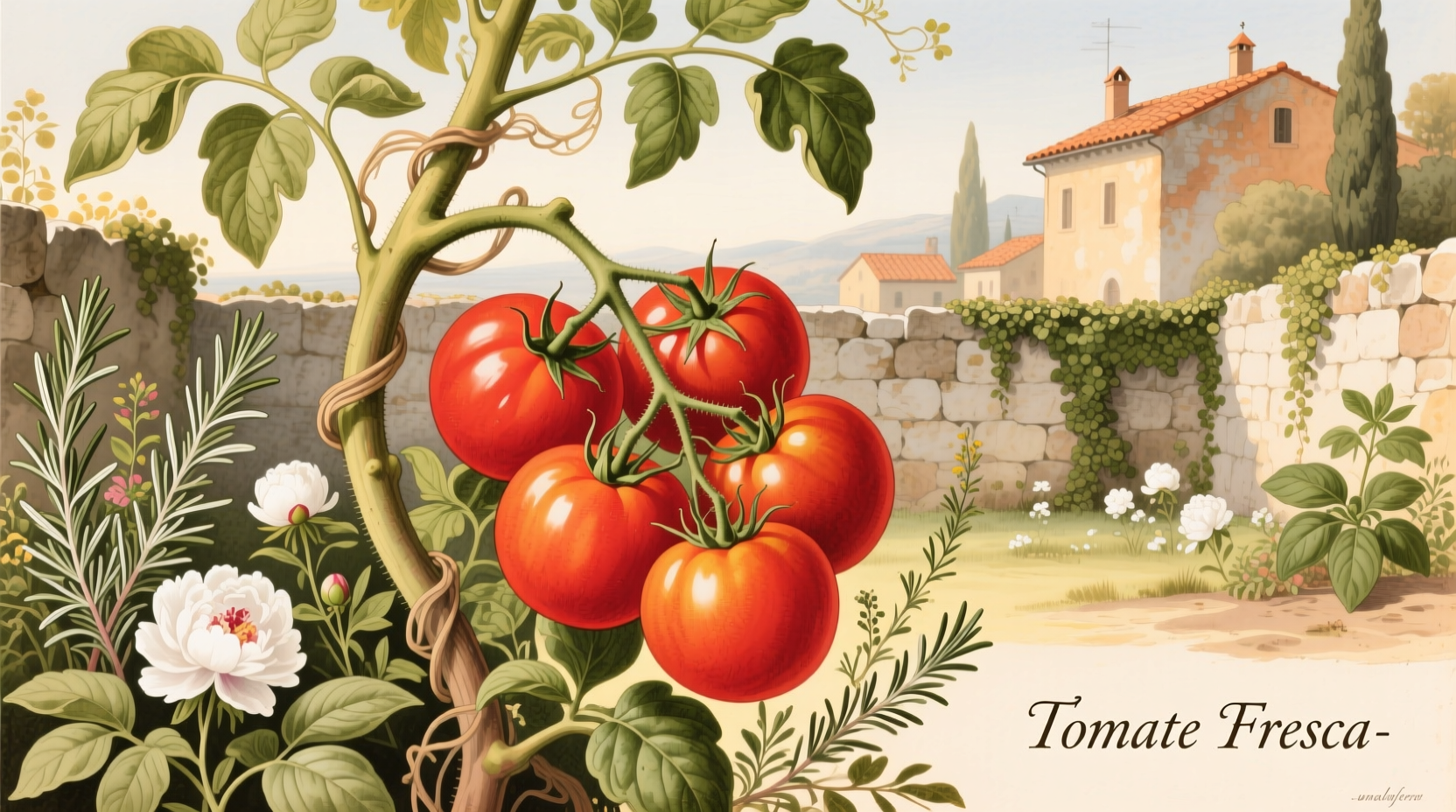Understanding this fundamental Italian food vocabulary unlocks authentic cooking experiences and meaningful conversations in Italian kitchens. Whether you're ordering at a trattoria or following a traditional recipe, knowing how to correctly use pomodoro elevates your Italian culinary journey.
Mastering Pronunciation: Say "Pomodoro" Like a Native
Getting the pronunciation right makes all the difference when communicating in Italian. Pomodoro is pronounced poh-moh-DOH-roh with equal emphasis on each syllable:
- Po - like "paw" in English
- mo - rhymes with "dough"
- do - as in "dough" again
- ro - with a lightly rolled "r" sound
Listen carefully to native speakers and practice saying pomodoro with clear, distinct syllables. Unlike English, Italian pronunciation is highly phonetic—once you know the rules, you can correctly pronounce almost any word.

From Golden Apples to Italian Staple: The Fascinating History
The word pomodoro literally translates to "golden apple" (pomo = apple, d'oro = of gold). When tomatoes first arrived in Italy from the Americas in the 16th century, they were yellow or golden varieties, hence the name.
| Language | Word for Tomato | Literal Meaning |
|---|---|---|
| Italian | Pomodoro | Golden apple |
| Spanish | Tomate | From Nahuatl "tomatl" |
| French | Tomate | From Italian "pomo d'oro" |
| Portuguese | Tomate | From Nahuatl "tomatl" |
When Tomatoes Met Italian Cuisine: A Historical Timeline
Tomatoes weren't immediately embraced in Italian cooking. Here's how they became central to Italian culinary identity:
- 1548: First documented tomato cultivation in Italy at the Vatican gardens
- Late 16th century: Tomatoes considered ornamental plants, not food
- 17th century: Southern Italian peasants begin incorporating tomatoes into cooking
- 1692: First known tomato sauce recipe published in Naples
- 19th century: Tomatoes become essential ingredient across Italian regional cuisines
- Today: Italy produces over 5 million tons of tomatoes annually
Using "Pomodoro" Correctly in Italian Contexts
While pomodoro refers to the fruit itself, Italians use related terms in specific culinary contexts:
- Pomodoro fresco - fresh tomato
- Pomodoro pelato - peeled tomato (common canned variety)
- Sugo di pomodoro - tomato sauce
- Pasta al pomodoro - pasta with tomato sauce
- Pomodoro ciliegino - cherry tomato
Understanding these distinctions helps you navigate Italian menus and recipes with confidence. Note that pomodoro can also refer to tomato sauce in certain contexts, particularly in southern Italy.
Common Mistakes English Speakers Make
Even with the correct word, non-native speakers often stumble with these nuances:
- Mistake: Using "tomato" (English pronunciation) in Italian settings
Solution: Always use "pomodoro" with proper Italian pronunciation - Mistake: Referring to tomato sauce as "salsa di pomodoro"
Solution: In Italy, it's simply "sugo" or "passata" - "salsa" refers to condiments like ketchup - Mistake: Using singular "pomodoro" when referring to multiple tomatoes
Solution: Remember the plural is "pomodori" (poh-moh-DOH-ree)
Why Tomatoes Are Fundamental to Italian Food Culture
Tomatoes aren't just an ingredient in Italy—they're cultural icons. The San Marzano variety, grown in the volcanic soil near Mount Vesuvius, has Protected Designation of Origin (PDO) status from the European Union. According to EU quality policy documentation, authentic San Marzano tomatoes must meet strict growing and processing standards to earn the DOP certification.
Regional variations abound: Northern Italy favors fresh, ripe tomatoes in salads and risottos, while southern regions showcase preserved tomatoes in countless sauce variations. This regional diversity explains why you'll find over 300 documented tomato varieties in Italy, each with specific culinary applications.
Practical Applications for Food Enthusiasts
Now that you know the Italian word for tomato, here's how to apply this knowledge:
- When shopping at Italian markets, ask for "pomodori maturi" (ripe tomatoes) for the best flavor
- Look for "pomodoro San Marzano dell'Agro Sarnese-Nocerino DOP" on canned tomato labels for authentic Neapolitan cooking
- Order "bruschetta al pomodoro" at restaurants for the classic tomato-topped bread
- Understand that "alla pizzaiola" means prepared with tomatoes and garlic, as used on pizza
Mastering this simple term opens doors to deeper engagement with Italian culinary traditions. The next time you're cooking Italian food, remember that you're working with pomodori—not just tomatoes—but a ingredient with centuries of cultural significance.











 浙公网安备
33010002000092号
浙公网安备
33010002000092号 浙B2-20120091-4
浙B2-20120091-4